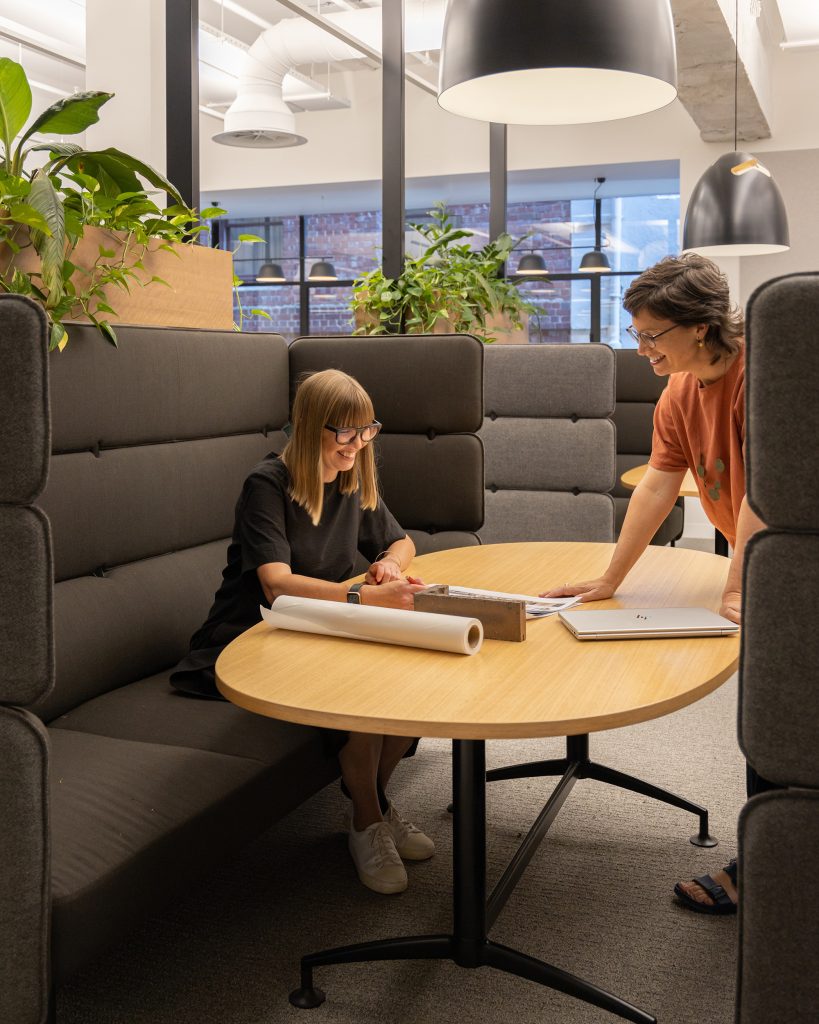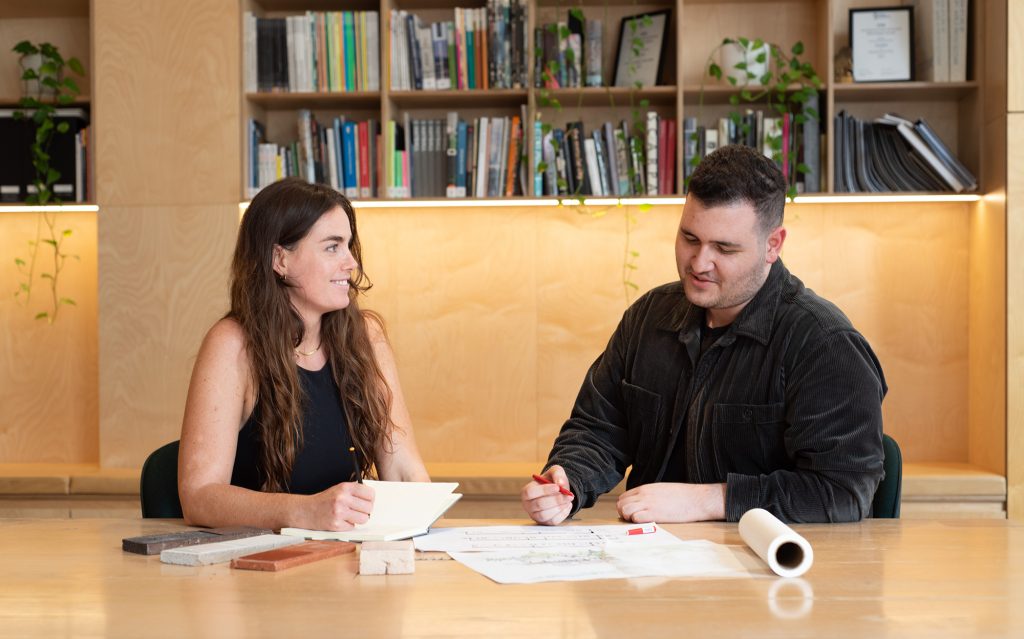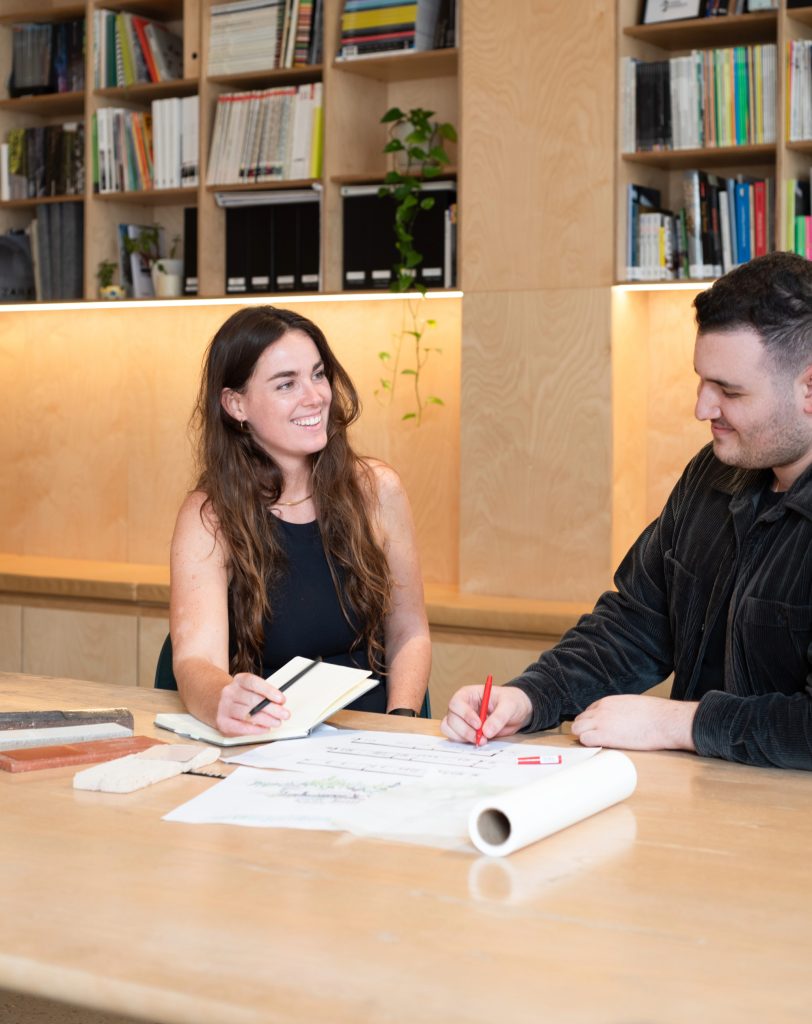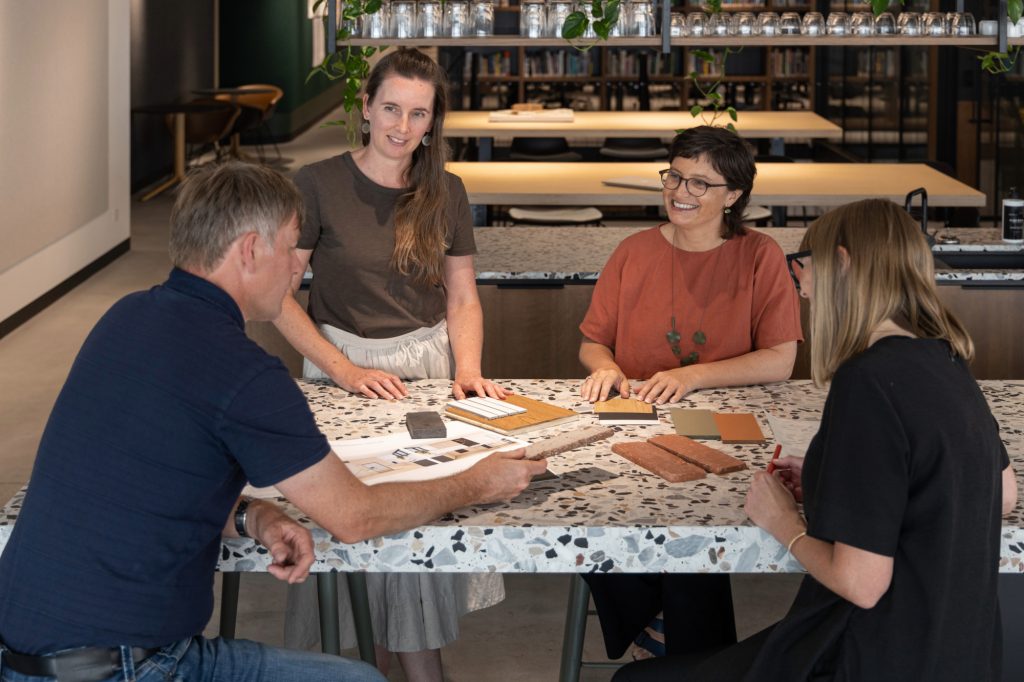
Sarah Buckeridge and Eilish Barry on shifting attitudes towards work life balance
Sarah Buckeridge and Eilish Barry on shifting attitudes towards work life balance
Share
Continuing our series celebrating Women of Influence in architecture and interior design, Australian Design Review (ADR) spotlights the career journeys of two leading women part of national architecture practice, Hayball.
Joining the practice in 1998, Sarah Buckeridge, became a Principal of Hayball in 2007 before commencing her current role as co-managing principal of the practice in 2020. Her extensive portfolio of projects, and breadth of experience across urban design, master planning and urban renewal projects for both private and public sectors, has seen her expertise regularly sought for government advisory panels and strategic projects. As a Fellow of the Australian Institute of Architects, Sarah is also currently serving on the Victorian Chapter Council.
Originally from the UK, Eilish Barry joined Hayball in 2022 and is based in the practice’s Sydney studio, and was recently named as one of this year’s ADR 30UNDER30. Eilish is passionate about driving change in the design industry and beyond through measuring social value.
Advocates for designing for social value, both Sarah and Eilish share a strong interest in the future form of cities and how we can effectively respond to challenges, such as developing affordable housing models and creating well-connected communities. While they are at varied stages of their professional journeys, they are united in making a significant contribution to better understanding social value within the profession of architecture and design, and in helping to drive meaningful change.

ADR spoke with Sarah and Eilish to learn more about their journeys in architecture and design, taking a look into their similarities and differences, challenges and lessons, as well as the many unique experiences they’ve faced along the way.
ADR: Sarah, what was your experience in the workplace when you first started in the industry? Did you experience any particular hurdles or challenges as a result of being a woman?
SB: “When I graduated in the mid-1990s it was a difficult period, as Australia was still experiencing the effects of a recession and there were limited employment opportunities for architects. This motivated me to travel to Singapore where there were exciting opportunities for young architects. I do not recall experiencing particular challenges as a woman in that context, although it was not uncommon for me to be the only woman in a project meeting or on-site.”
“I think the main difference when I returned to Australian practice in 1998, was that there were only a few visible female leaders, particularly in medium or larger practice, and industry and client groups were also overwhelmingly represented by men. There were also very few policies to support women’s retention within the industry such as paid parental leave.”
ADR: Eilish, what has your experience been like a couple of decades on since Sarah entered the industry? What differences, or similarities, did you find in comparison to Sarah’s experiences?
EB: “As I started my training in the early 2010s, I had the privilege to come after numerous female architects who have made significant contributions to the industry and had visible recognition of their work, such as Denise Scott Brown and Zaha Hadid. So, I didn’t perceive many barriers as a woman during my undergraduate and masters degrees. I found the gender diversity split was at least 50:50 (potentially even 60:40) women!”
“However, there was a noticeable decrease in women when I moved into practice – particularly women in senior positions. Like Sarah, I’ve only recently seen an increase of women in other roles within the project team, such as structural engineers.”
“In each practice, I’ve been lucky to have one or two female principals, like Sarah, invest time in mentoring me and demonstrate that it is possible to progress in your career as a woman.”

ADR: Thinking about the fact that it’s through failure that we learn and grow personally and professionally, what are your individual approaches to, and perspectives on, failure?
SB: “I think maintaining a sense of humility and remembering that we are always learning in what is a complex and ever-changing profession is important.”
“In my experience, it is critical to ask questions and be prepared to ask for advice and help from more experienced practitioners. I think we are getting better at offering and implementing structures for support around young architects – which is encouraging to see. While the old ‘sink or swim’ approach can mean you learn quickly, it is unnecessarily stressful and doesn’t help to build confidence.”
EB: “I was one of those young graduates thrown into the sink-or-swim approach! Looking back, I now appreciate the experience and the mistakes I made because, like Sarah, I believe it has accelerated my professional growth. However, I’ve come to realise the value of having an experienced colleague by your side throughout a project, providing assistance and offering guidance at various stages. This approach feels more sustainable and fosters lasting development for longevity.”
“I’m still learning and recently, I received some valuable advice from one of the Principals at Hayball: ’It’s okay to admit when you don’t know something and ask questions.’ I used to believe that asking questions would make me appear incapable or inferior, especially as a young woman leading projects. However, I’ve discovered that each time I seek help, it leads to better outcomes because I benefit from someone else’s experience.”

ADR: Sarah, as co-managing principal of a national practice, how do you manage the juggle and demands of work and life? What advice would you offer Eilish and the women of Eilish’s 30UNDER30 cohort?
SB: “Finding balance is not something that will involve a consistent approach throughout your whole career. For example, I have only been working full time again in the last five years after about 15 years of working many variations of part-time while my three children were younger — everything from two days per week up to nine days a fortnight.”
“It is important that you find a sustainable balance in order to maintain a career over the long term and that will be different for everyone. For me, I’m enjoying being able to get to work before 9am again without those extra logistical challenges of school drop-offs and pickups”
ADR: Eilish, what is your approach to work-life balance? Do you have any concerns about progressing your career in an industry that could still do better in terms of supporting women to return to work after having children, as an example?
EB: “I am a strong advocate for a healthy work-life balance because I believe it makes me a better architect. I often find inspiration for design and research when I’m away from my desk. In the past, I used to go for runs during my lunch breaks with colleagues, and we called it ‘runspiration’ because we consistently generated new ideas while on the move.”
“However, when I look at the statistics within our industry, I’m concerned. It still feels like on the whole women often still have to choose between their careers and starting a family. This is particularly evident when considering leadership positions – many practices still have all-male boards”
“Despite this, I’m reassured that I can visibly see women, like Sarah, show that it’s possible to balance both career and family responsibilities. Being part of a practice like Hayball, where many women hold senior positions, is both motivating and inspiring. Their influence promotes a culture of flexibility and balance, enabling women to advance in their careers while maintaining a fulfilling personal life, whatever that looks like, over the long term.”
ADR: Sarah, as a leader and mentor, how do you go about supporting female colleagues — indeed all colleagues — to have sustainable and fulfilling careers?
SB: “I have been delighted to see how many women are now coming through into senior roles within our practice and that has been something we’ve actively supported through flexible work policies, as well as by recognising that roles need to be adaptable to allow women to thrive through different stages of their career.”
“Our structured mentoring program GROW, which is led by two of our female senior associates, has been another vehicle for me to work directly with a number of women within our practice. It has also been invaluable to engage with industry leadership in this space, such as through The Champions of Change program, Parlour Collective and the Institute of Architects’s forums.”
“I think by being in this role, it helps younger women see that it is possible to take on leadership roles and that this should not require you to work unsustainably or sacrifice other elements of your life whether that is family or caring responsibilities, teaching or research.”

ADR: On a final note, both Sarah and Eilish, do you feel that women bring a unique perspective to the architecture and design industry?
SB: “It is important not to generalise, but I think having women active at all levels in the profession has contributed to recognising the value of collaboration and inclusion within briefing, consultation and design processes.”
“Generally, having diverse perspectives within the profession is a great thing, and should extend to encouraging practitioners of different genders, as well as with diverse cultural and lived experiences.”
EB: “I agree – increasing the diversity mix ensures that different questions are asked and different perspectives are considered. How can we design for diversity if everyone on the design team has the same perspective?”
For the month of March, in recognition of International Women’s Day, Australian Design Review will be shining a spotlight on women of influence in architecture and interior design. While we pride ourselves on championing women and people from underrepresented groups at all times, we believe it’s necessary to recognise the achievements of individuals who have risen to the top, despite social- or industry-related imbalances. As well as bringing you profiles and project features that celebrate the work of game-changing, innovative women, we’ll also lean into the very real, yet rarely discussed realities of working in an industry that still holds onto traditional modes of working that aren’t always inclusive or supportive. It’s our privilege this month to bring you profiles and features that celebrate the unique perspectives and talents that women bring to the architecture and interior design industry.
Photography supplied by Hayball.
























